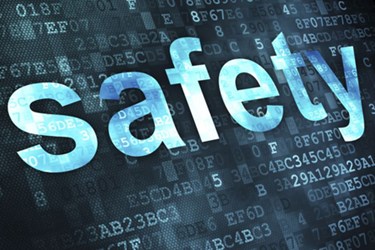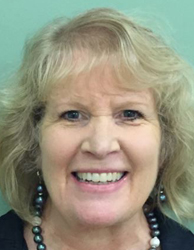How To Use Pharmacovigilance Methods To Detect Safety Issues

According to MarketsandMarkets, the global pharmacovigilance market is expected to reach a value of 154.1 million in 2019[1]. Many serious safety issues can be detected early with application of pharmacovigilance methods, thereby enabling pharmaceutical companies to obtain marketing authorizations / approvals and providing patient access to important therapies. However, the role of pharmacovigilance activities in drug development is changing. The increased use of accelerated review approaches is leading to more post-approval safety surveillance activities. Companies must leverage innovative approaches to efficiently monitor the safety profile of products and manage patient safety. In this Q&A article, Leann Fieldstad, Vice President, Global Pharmacovigilance Operations, PAREXEL, discusses what you need to know to navigate the pharma safety landscape.
Q: What are the challenges of the current safety landscape?
 Fieldstad: The pharmaceutical industry has evolved from drug safety to pharmacovigilance, defined as the science and activities related to the detection, assessment, understanding and prevention of adverse events or any other medicine-related problem. Safety operations, safety science and signal management, has led to a more complex pharmacovigilance landscape. As such, today’s safety operations require the ability to collect safety data from multiple sources and the use of – and continued support and maintenance of – complex IT systems.
Fieldstad: The pharmaceutical industry has evolved from drug safety to pharmacovigilance, defined as the science and activities related to the detection, assessment, understanding and prevention of adverse events or any other medicine-related problem. Safety operations, safety science and signal management, has led to a more complex pharmacovigilance landscape. As such, today’s safety operations require the ability to collect safety data from multiple sources and the use of – and continued support and maintenance of – complex IT systems.
The lack of data standardization for adverse event collection presents a big challenge. Adverse events need to be entered into multiple databases, while multiple partners and safety data agreements can result in numerous distributions, submission rule configurations and maintenance. Additionally, the lack of global regulatory harmonization further contributes to pharmacovigilance complexity.
Signal management is becoming increasingly complicated based on a periodic monitoring of large databases consisting of spontaneous and solicited adverse event reports. Such databases generate statistical reports presenting information on adverse events received over a specific time period for a defined set of active substances or drug products. Signal management activities include the analyses of a variety of sources and conducted by multiple teams. The variability in health authority expectations, compounded by an evolving focus from global health authorities on evaluating benefit/risk profiles are contributing to the current challenges in the safety landscape.
The lack of global harmonization also presents substantial challenges. Regulatory requirements are often country-specific and requirements for emerging markets may not be aligned with European legislations. This presents complexities when developing global risk management plans and risk evaluation mitigation strategies.
The types of adverse event reports have also evolved. Many new products are launched with various patient support services and compliance programs, which can cause an increase in adverse event reports from solicited patient support programs. Moreover, many of these reports have limited medical / clinical data and impact abilities for good signal management. There is also the likelihood of increased adverse event reports from new data sources, for example, through social media channels.
Safety risk management must consider and optimize all processes and activities that impact the risk benefit balance of products. Collaborative relationships within companies and externally are imperative.
Q: How can biopharmaceutical / pharmaceutical companies effectively manage product safety?
Fieldstad: From product development through commercialization and access, biopharmaceutical / pharmaceutical companies must integrate technology to help facilitate the end-to-end monitoring in turn enhancing ease and timeliness of data collection and reporting. Technology systems must be comprehensive and flexible to include local and international requirements, the ability to evolve along with regulations, and meet global electronic reporting requirements.
Organizations must ensure that all safety systems and pharmacovigilance practices are harmonized and global. This requires developing a system that includes all aspects of safety risk monitoring to comply with local regulatory requirements, aggregate reporting and safety surveillance capabilities.
Sponsors must be prepared to conduct ongoing risk-benefit analyses over the entire product life cycle, from first-in-human studies through the product’s market access by taking proactive measures. Some of these include the launching of pre-approval disease registries that develop into post-approval surveillance and conducting studies that reduce effort for the clinic and patients while generating safety and other forms of relevant data. All of these activities must be conducted in compliance with regional and global regulations.
Partnering with experienced service providers – those with global expertise in pharmacovigilance regulations and practices– can help establish effective systems while conserving limited resources. Getting it right the first time can save time and budget, and provide a competitive advantage for biopharmaceutical / pharmaceutical companies that think and act strategically.
Q: With higher costs and more stringent reporting standards, how has the pharmacovigilance landscape evolved in recent years?
Fieldstad: The biopharmaceutical / pharmaceutical industry is experiencing a dynamic period of pharmacovigilance evolution in its history. The increased use of novel, accelerated regulatory pathways, along with a growing interest in safety information from a range of stakeholders, has led to a greater role of pharmacovigilance in drug development and more post-approval safety surveillance activities. Global Health Authorities have published regulations and guidelines for post-approval safety studies. Additionally, rapidly expanding volumes and types of reported safety events have compelled the industry to urgently consider new approaches to managing pharmacovigilance throughout the product lifecycle.
Over the past decade, increased use of various expedited review approaches and other improvements have accelerated time-to-market for new drugs. While this has expedited patient access to valuable treatments, it has also increased the risk of adverse drug reactions detected for the first time when the product is already in market. This leads to higher demand for post-approval safety surveillance studies and related activities.
In parallel, the scope of pharmacovigilance is expanding across borders – from national to international and from product development to post-approval monitoring – for the lifecycle of the products. Strict penalties and withdrawal of product marketing authorization / product license for failing to comply with regulations are in part prompting biopharmaceutical companies to carefully review and enhance their pharmacovigilance systems.
Pharmacovigilance systems require a comprehensive, strategic, and well-executed approach. All safety data must be collected, processed, analyzed and reported according to local and global regulations.
Q: What are some best practices for pharmaceutical companies to keep in mind when working with pharmacovigilance contract service providers?
Fieldstad: Pharmaceutical companies are increasingly leveraging outsourced providers as a cost-effective, scalable solution to growing pharmacovigilance demands. Several best practices can enhance these outsourcing relationships.
Below are some considerations to help improve these partnerships.
- Reducing the “total cost of ownership” by strategically outsourcing activities to minimize hand-offs and vendor oversight costs (e.g., working with a single provider instead of several, across multiple compounds and/or a set of related activities);
- Having harmonized, simplified global pharmacovigilance processes and documentation which contract service providers can utilize.
- Focusing the relationship on multiple types of value creation such as oversight, proactive capability development, technology linkages and sharing lessons learned/best practices from other relationships;
- Future-proofing the relationship by choosing partners that have global pharmacovigilance intelligence and can flex in scope and volume as needs change;
- Working with providers that have experience leveraging lower-cost locations while maintaining high-quality standards; and
- Incorporating local affiliates into the pharmacovigilance approach using a “hub and spoke” model.
Q: What are the benefits of standardizing pharmacovigilance activities?
Fieldstad: Pharmacovigilance takes a proactive view of safety and risk management. Organizations must consider and optimize the processes and activities that impact the risk-benefit analysis of drug products.
Standardizing pharmacovigilance activities has may advantages: increased oversight, streamlined data collection for adverse event reports, and greater utilization of patient-support programs. Centralized operation of pharmacovigilance efforts within the organization can also help facilitate the participation of third parties performing these activities. In the end, it can lead to better alignment and sharing of best practices between industry and regulators.
[1]Pharmacovigilance and Drug Safety Software Market by Functionality, Delivery Mode, End-user- Global Forecast to 2019. (2015, March). Retrieved November 18, 2015.
